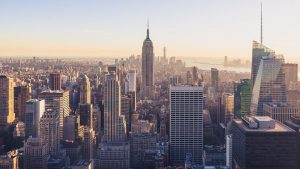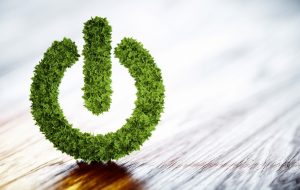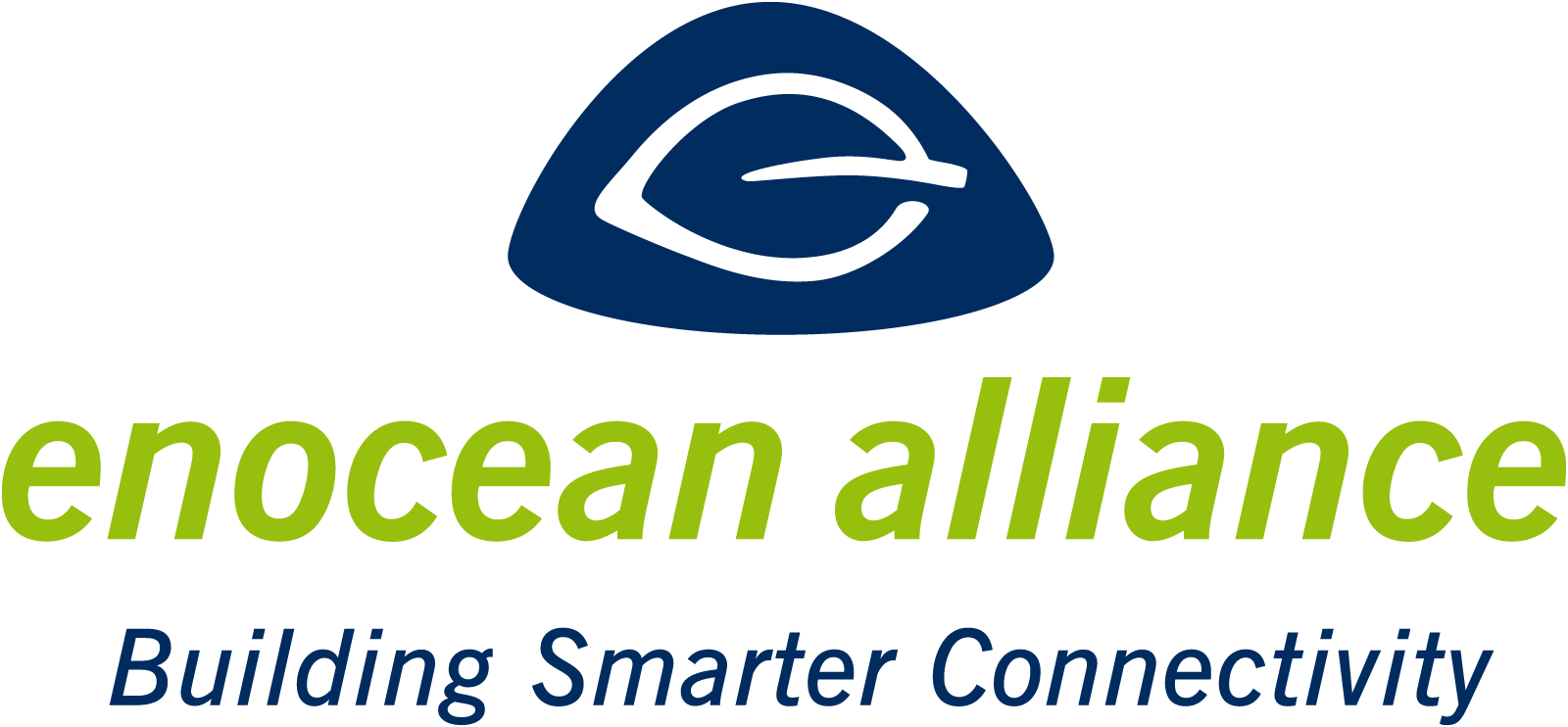New York City’s Local Law 97 mandates large (over 25,000 square feet) existing buildings in New York City reduce their carbon emissions by 40% by 2030 and by 80% by 2050. What are the requirements and opportunities for building owners and operators?
By Michael St. Louis and Graham Martin, EnOcean Alliance Inc.

“With so many people and cars in NYC, it can be hard to believe that our buildings are the number one contributor of harmful emissions,” said NYC Council Member Andrew Cohnen. (1) There are approximately one million buildings in New York City (residential and non-residential) which account for 71% of New York City’s greenhouse gas emissions (2).
Local Law No. 97 of 2019, passed as part of the Climate Mobilization Act by the New York City Council in March 2019, requires large (over 25,000 square feet) existing buildings in New York City reduce their emissions by 40% by 2030 and 80% by 2050 (compared to base year 2005).
The law is unique and novel in its aim because it targets existing buildings and requires owners to invest in renovation and retrofitting to make their buildings more energy-efficient. The New York Post has called the law “one of the most ambitious climate legislations for buildings enacted by any city in the world.” (3)
The law covers approximately 50,000 buildings which account for around 30% of citywide emissions(4), meaning that this individual law is aiming to reduce all emissions in the city by one quarter by 2050. Firstly, buildings will have to be retrofitted by 2024 or building owners will face severe penalties for emissions above the specified limits, i.e. $268/year per metric ton above the limit. It is estimated that the average building violation could reach approximately $162,772 by 2024 and the total value of fines faced by all affected buildings will reach approximately $330.4 million in 2024, and $695.6 million by 2030 (5). All buildings covered by the law must submit an emissions intensity report on May 1st every year starting from 2025. The emission limits will be tightened every 5-year period up to 2050.
The costs involved for the building owners or businesses will quickly run into billions of dollars throughout the city, so it is important to understand what has to be done and where potential returns can be expected, e.g. through lower energy bills, through creating more attractive properties (higher rents) or potentially through new government incentive schemes.
What are the options for building owners/operators to reduce their building’s carbon emissions? Some common strategies include:
- Investing in the building envelope, such as insulated windows, walls or roofs.
- Upgrading to energy-efficient technical equipment such as air conditioning and heating systems.
- Installation of building automation and control, e.g. for lighting and temperature control.
All of these strategies are effective ways of decreasing carbon emission, but what are the practicalities involved and what is the return on investment period?
Saving Energy and Money with Building Automation and Intelligent Control Systems
Investing significantly in the building envelope can typically yield an energy saving of 50% and beyond. This is typically a huge investment and is invasive during the retrofit, potentially having to close down part or all of the building during this period. Return on investment can typically be a multiple of decades.
Upgrading to energy-efficient technical equipment such as HVAC units can yield energy savings of 10% to 60%, depending on building type and status of existing equipment, and will typically provide a return on investment within around a decade. Installation may be with restricted disruption to building operation.
Installation of building automation and control systems can yield energy savings of typically 10% to 50%, depending primarily on the use-case of the building, and will typically provide a return on investment in three to eight years, in exceptional cases even down to less than two years. Installation, if using wireless sensors, can be virtually without disruption to building operation. This can be a game-changer in multiple building types such as hospitals, care homes, government or educational facilities, hotels or retail where disruption or partial closure can be costly or virtually impossible.
Building automation and control systems have the added value of increasing the comfort and security of a building, which in a commercial environment can lead to increased productivity and health and wellness of employees and / or building tenants.
Going Wireless with Energy Harvesting
If tenants make up a large portion of energy use within a building, it will be absolutely necessary to have their cooperation and buy-in on any major energy-efficient retrofit. Considering the millions of sensors necessary for New York alone, these sensors must be standardized, wireless, maintenance-free (self-powered) and easy to retrofit. With building automation and control, the benefits of least invasion (noise, mess, shut-down, loss of revenue etc.) as well as lowest cost and fastest return on investment have become the most compelling way of taking the first steps to reaching the required goals. The sensors required can be installed by simply “peel and sticking” wherever appropriate and today’s sensors which power themselves through energy harvesting (e.g. room light, temperature differences, mechanical movement) can be maintenance-free for decades. The added feature of being able to monitor and control your space using cell-phones or other internet-capable devices from anywhere in the world is also attractive to tenants and building users, making buy-in easier.
A Reliable Partner Eco System
There are a number of radio standards for building automation and intelligent control systems on the market. One which is particularly good for building automation is the EnOcean Alliance wireless standard (ISO/ IEC 14543-3-11) in sub 1GHz frequency. Optimized for use in buildings the sensor’s radio has a typical range of approximately 100 feet/30 m indoors. The interoperability of different suppliers’ end-products is an important success factor when it comes to retrofitting and extending building automation. The EnOcean Alliance eco system provides over 5,000 product variants using the EnOcean radio.
The EnOcean Alliance based in California is a standards-based mutual benefit organization consisting of 400 companies from the building automation community who are specialized in creating solutions for energy-efficient, comfortable and secure buildings. Founded on an international open wireless standard, the organization’s offers enhance building energy management with a unique feature that the sensors and switches power themselves using energy harvesting techniques. This means no pulling cables to sensors, no opening walls, no noise nor mess during installation and never a battery to replace. The German technology, originally created by industry pioneer EnOcean (a spin-off from Siemens), has been installed into over 1 million buildings since its first generation introduction 20 years ago.
In Practice: How Wireless Controls are Enabling Occupant Comfort and Energy Savings at the Starrett- Lehigh Building in New York City (6)
The Starrett-Lehigh Building is one of Manhattan’s largest and premiere landmark properties, boasting fashion moguls, elite brands and creative companies as tenants. Located in West Chelsea, the Starrett-Lehigh Building was completed in 1931 and originally served as a freight terminal. Encompassing a full city block and 2.5 million square feet of commercial office space, the Starrett-Lehigh, like many pre-war buildings, is heated by steam. Historically, when the heat in the city comes “on”, tenants are immediately forced to open windows in order to provide an ambient climate. This scenario exists in buildings around the city that are overheated and unbalanced. The situation is further compounded where one side of the building is always warmer, due to solar gain in the winter, while the other side remains colder throughout the heating season. The delivery of heat around a building is typically identical and often provided without any indication to the internal temperature of the space, let alone the desired temperature setting of the occupant.
Today, the Starrett-Lehigh is not only a symbol of creativity, but a model of innovation and efficiency. Magnum Innovations implemented wireless, valve actuator controls to modulate the amount of steam available to a radiator based on a wireless, self-powered thermostat. Occupants are visually presented with digital information about current temperature and are able to simply adjust a dial on the device to select their desired comfort set point. The valve actuator opens and closes accordingly, allowing the exact amount of heat requested to be delivered. With wireless, cost-effective solutions for controlling radiators, building occupants and owners no longer need to suffer through heating season with unhappy tenants and outstanding utility bills. The implementation of these controls alone can save around 20% on energy consumption and are often eligible for valuable utility incentives.
New York City Innovation Program Chooses EnOcean Technology (7)
The highly flexible, wireless solutions from Illumra help the city to achieve reduced energy consumption at 30%by 2017. The Thomas Jefferson Recreation Center and the NYC Department of Sanitation are the first-mover retrofit projects. The Thomas Jefferson Play Center opened in the summer of 1936. As a NYC historical building, it was constructed with WPA funding following the Great Depression. The facility utilized low-cost building materials such as brick and cast concrete, and employed the curvilinear architecture of the 1930’s Art Modern style. Most public areas had no local light switches, which meant occupants had to use circuit breakers for basic on-off control. Furthermore, the concrete masonry demising walls and plaster ceilings made conventional retrofit wiring strategies extremely difficult or impossible.
The Recreation Center project utilized Illumra EnOcean-based relays to convert the circuit breakers from manual on/off operation to automatic, occupancy-based lighting control throughout the building. In some areas, Illumra relays were inserted into lighting fixtures to reconfigure the lighting circuits and deliver more granular control than what was originally designed almost 80 years ago.
How a Retail Chain Controls Lighting & HVAC to Optimize Energy Usage (8)
New York City based system integrator Titanium Intelligent Solutions installed EnOcean-based systems in a U.S. retail chain with over 100 locations in nine states. Using the Titanium platform the retail chain now has a greater ability to cost-effectively manage the lighting and HVAC in their stores from the corporate office. In figures, this means that Titanium monitors over 20,000 network wireless devices that cover many distant locations for an aggregate of 10 million square feet of space, indoors and outdoors. Additionally, Titanium remote-automated commissioning gave the customer savings of approximately 90% during project implementation. Moreover, advanced intelligent capabilities may result in ongoing approximate energy savings of over 30%. The retail chain benefited from the EnOcean eco-system interoperability by using products from four different EnOcean Alliance members.
Sustainable Buildings with a Sustainable Technology
Solutions from EnOcean Alliance partners using EnOcean’s resource-saving energy harvesting technology in their products form the basis for energy efficiency and CO2 reduction of new and existing buildings. The energy harvesting technology from EnOcean enables new and existing buildings to be sustainably digitalized and to reach a better CO2 footprint without any cables or battery waste in a short period of time – supporting New York building owners to meet all requirements of New York City’s Local Law 97.

Picture credits: Getty Images/Petmal
References:
- New York City Council Press Council to Vote on Climate Mobilization Act ahead of Earth Day – Press (nyc.gov) April 2019
- „To Fight Climate Change, New York City Will Push Skyscrapers To Slash Emissions“. org. Retrieved May 2020
- Nonko, Emily (January 16th 2020). „NYC buildings prepare to drastically reduce emissions to avoid penalties“. New York Post.
- DiChristopher, Tom (April 18th 2019). „New York City embraces pillar of AOC’s Green New Deal, passing building emissions bill“. CNBC.
- cany.com Retrieved January 2021
- https://magnumenergysolutions.com/starrett-lehigh/
- https://perpetuum.enocean.com/01-2015-en/illumra-new-york-city-innovation-program-chooses-enocean-technology/?lang=en
- https://perpetuum.enocean.com/01-2020-en/titanium-intelligent-solutions-us-retail-chain-reduced-energy-costs-significantly/?lang=en
Authors:
Michael St. Louis, Marketing Working Group N. America EnOcean Alliance.
Sales EnOcean Inc.
Graham Martin, Chairman & CEO EnOcean Alliance Inc.
graham.martin@enocean-alliance.org



 English
English  简体中文
简体中文  Français
Français  Italiano
Italiano  日本語
日本語 
